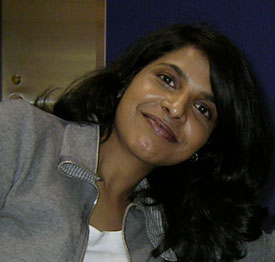Providing Scientists with Software Resources and Tools
By Karthika Swamy Cohen
One of the recurring themes at the minisymposium on Software Productivity and Sustainability for CSE and Data Science at the SIAM conference on Computational Science and Engineering being held in Atlanta, GA this week was the lack of set structures and resources for scientific software and program applications for researchers in the physical and biological sciences.
Should scientists be designing their own software to achieve the programming capabilities they need for applications? What is the incentive to doing that in a career track where you are expected to publish papers and make scientific breakthroughs, not create software programs?
A step in the right direction would be an independent resource with the goal of providing researchers with the tools and capabilities they need for programming.
That is one of the goals of the National Science Foundation-funded Molecular Sciences Software Institute (MolSSI). The new initiative will serve as a nexus for science, education, and cooperation for the computational molecular science community.
Theresa Windus of Iowa State University, a member of the Board of Directors of MolSSI, gave an overview of institute. One of the challenges faced by molecular scientists in academia is the lack of student training in software development. “You want them to be good at programming, but they are not getting their degree in programming. So how do you fix that?”
The Molecular Sciences Software Institute (MolSSI), funded by the NSF, will launch this April. Image credit: Theresa Windus, CSE17 presentation.
Undergrad programs in chemistry and physics typically don't need any training in software development or programming. Graduate programs in these areas require minimal coursework between the bachelor’s and Ph.D. degrees, Windus said.
On the other hand, most computational science and applied mathematics students lack the knowledge of scientific domains in the molecular sciences to help develop creative software solutions.
Another challenge is the diversity of algorithms molecular scientists encounter. While algorithms may run well in one architecture, they don’t always function as well in others.
After outlining these pitfalls, Windus went on to explain the benefits of good programming capabilities. “What could we do if we had really good software?”
Analysis of intrinsically disordered proteins (IDPs) is one area that could benefit greatly from specific software programs. IDPs, which do not adopt compact folded structures are highly flexible due to lack of stable conformations. Due to their instability, such proteins exhibit constant interactions with bond making and breaking. Software programming can help design a systematic method to identify unstructured regions of the proteins, which are of growing interest to biologists.
Molecular-level catalyst design is another area that can use software development. Catalysts, similar to IDPs exhibit a wide variety of interactions, and obtaining an understanding of the reaction mechanisms and dynamics of the environment requires the design of sophisticated software.
Another area in need of programming capabilities is complex materials chemistry, which is critical for acquiring mechanistic insights into fuel cell membranes, light harvesting plants, and the like.
“The goal of MoISSI is to make better software and to make the software work for us,” Windus said. “We are not going to take over anyone's software. Hopefully we are going to give you tools to make them better.”
The institute, which officially launches this April, hopes to serve and enhance the software development efforts of the broad field.
Interacting with partners in academia and industry, MoISSI plans to work with computing and mathematical science groups nationwide and internationally to design, develop, test, deploy, and maintain key code infrastructure and frameworks for the entire community.
In addition to working as a nexus, Windus said the institute will also provide software resource. It will mainly work as a clearing house – if scientists have particular software needs, MolSSI could point them in the right direction. In addition, the institute also plans to provide training via summer schools, targeted workshops, and high school and undergraduate training programs.
“We also want to engage computer scientists and mathematicians seeking interdisciplinary applications,” Windus said. That was part of her reason for being at CSE17.
MolSSI’s long-term objective is to enable computational scientists to tackle science and software challenges that are more complex than those currently within our grasp. With significant advances in software infrastructure, education, standards, and best-practices MolSSI hopes to provide opportunities to scientists to help tackle the next generation of scientific Grand Challenges.
 |
Karthika Swamy Cohen is the managing editor of SIAM News. |